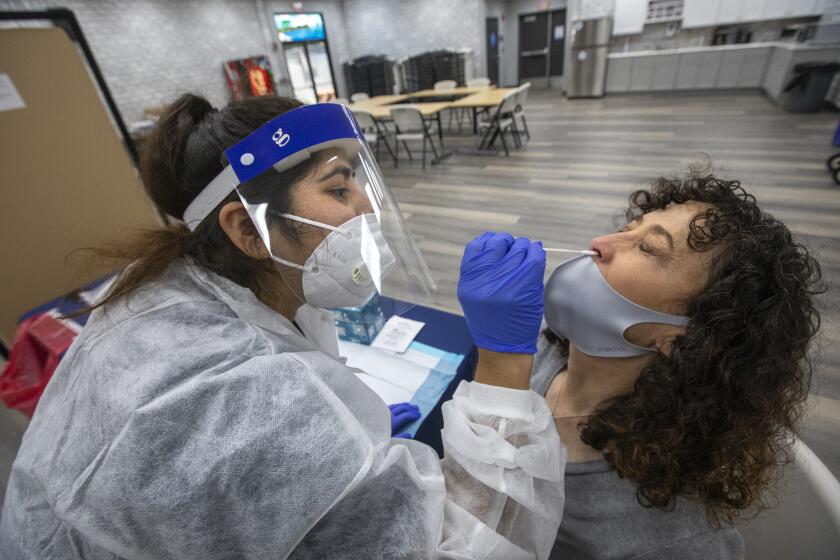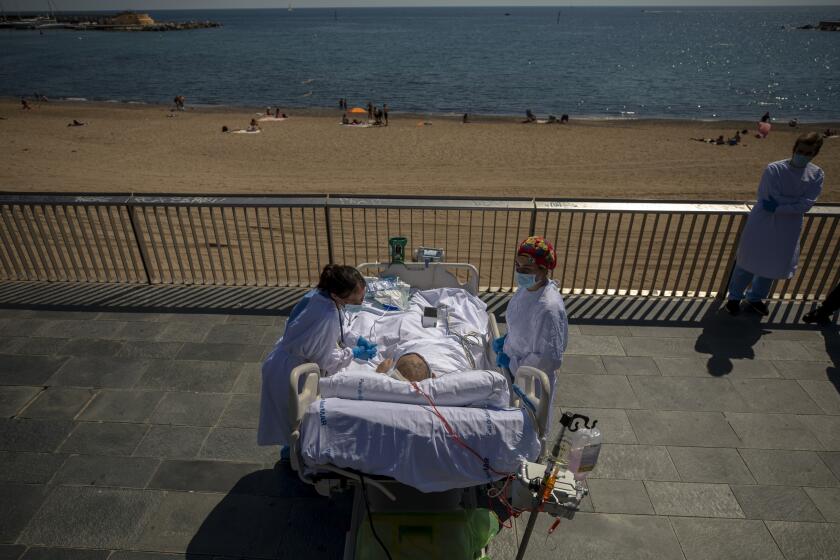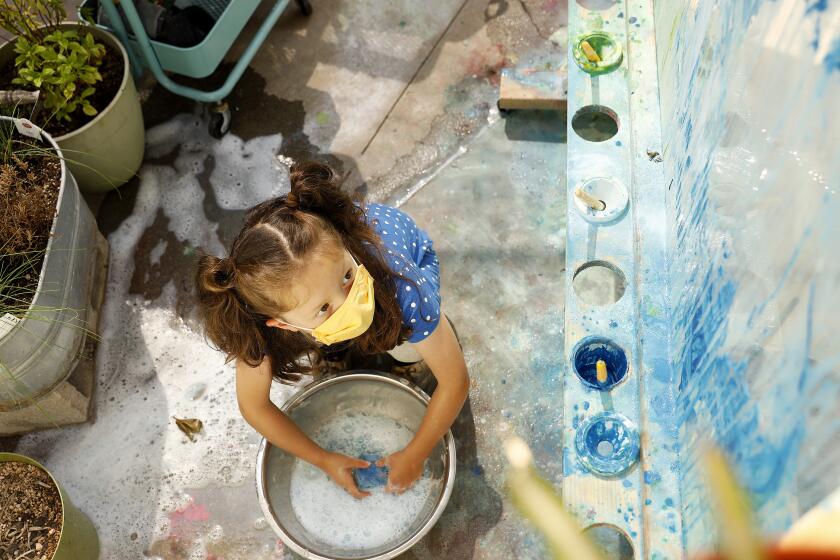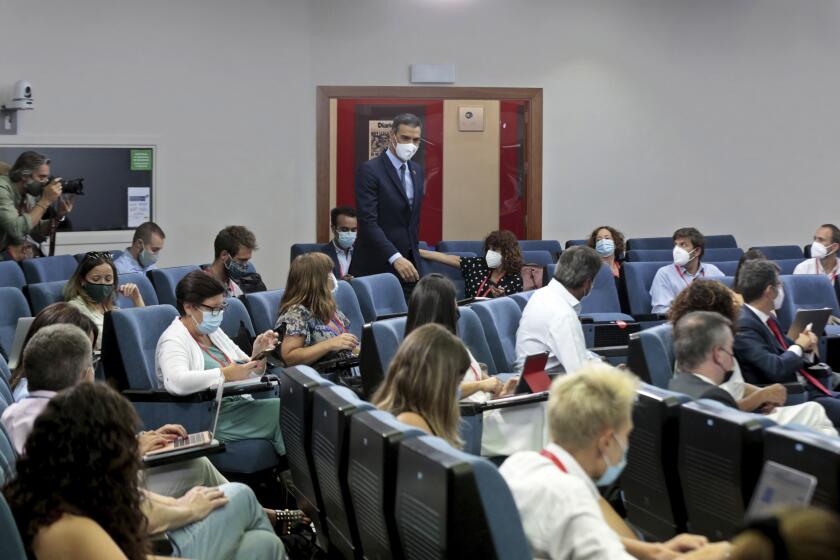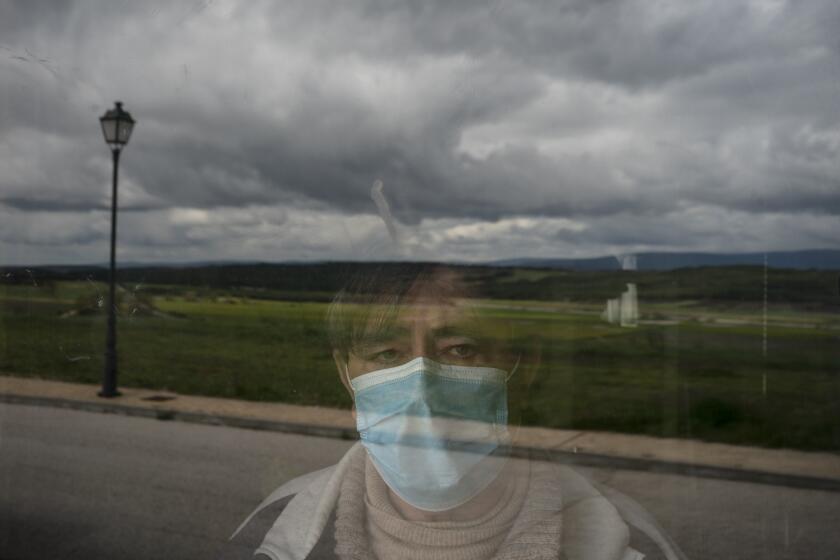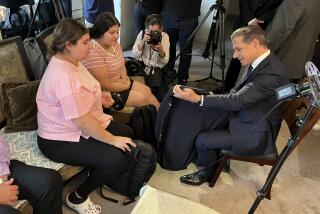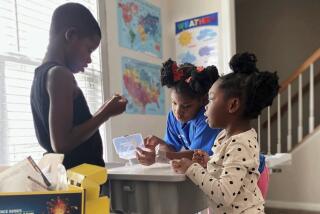Risking jail, some parents in Spain resist sending kids back to school
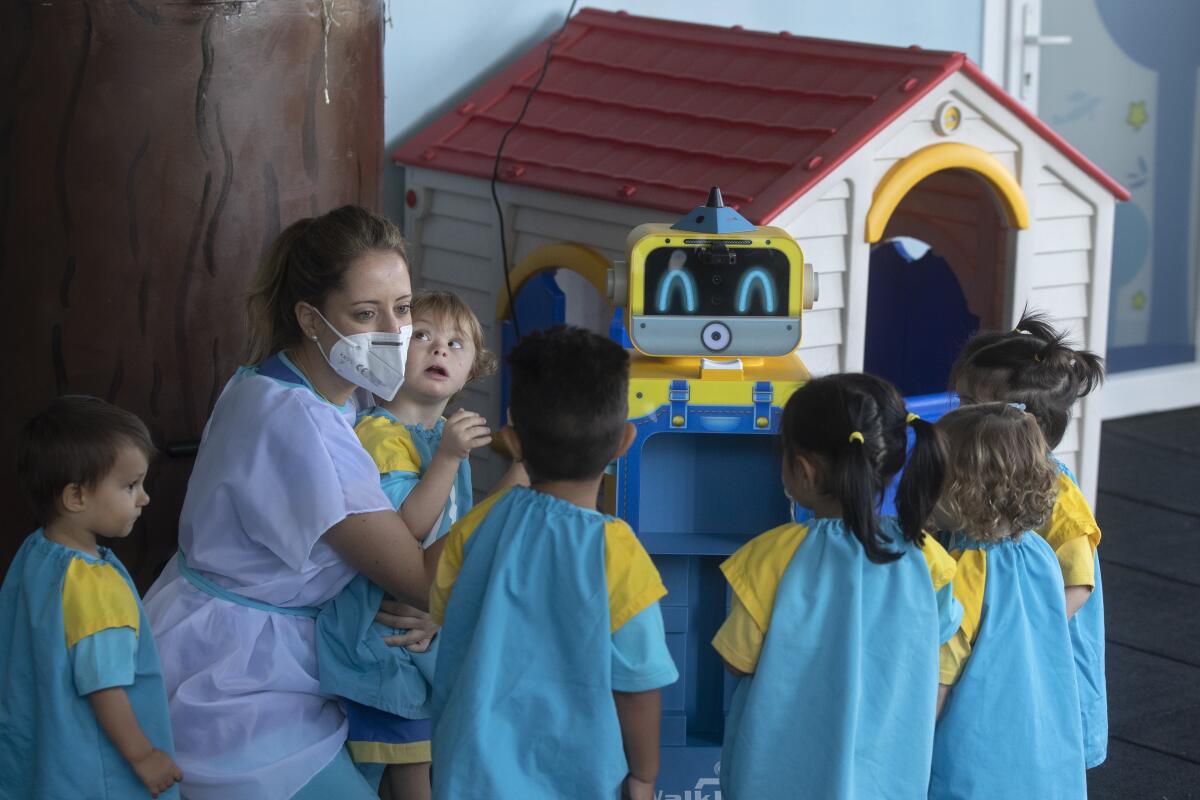
- Share via
BARCELONA, Spain — Ángela López hardly fits the profile of a rule breaker. But López, the mother of a 7-year-old girl with respiratory problems, has found herself among parents ready to challenge Spanish authorities on a blanket order for their kids to return to school.
They are wary of safety measures they see as ill funded as a new wave of coronavirus infections sweeps the country. They fear sick students could infect older relatives who are at higher risk of falling ill from the virus. And they say that they have invested in computers and better network connections to prepare for online lessons, even preparing to homeschool their children if necessary.
Many of the defiant parents, including López, are ready to stand up to Spain’s one-size-fits-all rule of mandatory in-school education, even if that means facing charges for truancy, which can be punishable with three to six months in jail.
López’s daughter was born with a condition that makes her prone to suffer episodes of bronchial spasms, which can cause difficulty breathing. Because COVID-19 attacks the respiratory system, López doesn’t want to take any risks.
“We feel helpless and a little offended. It’s like they force us to commit an illegal act because they don’t give us a choice,” said López, who lives in Madrid.
“It’s a matter of statistics,” she added. “The more cases there are, the more likely you are to catch it.”
The gathering and dissemination of information on infections at schools is shaping up as a haphazard mishmash of different policies, depending on the state and school district where the cases occur.
More than half a million people have contracted the coronavirus in Spain, and at least 29,500 have died with it, although the official record leaves out many who died in March and April without being previously tested.
With an average of 229 new cases per 100,000 inhabitants over the past two weeks, Spain currently has the highest rate of contagion in Western Europe. Within the region, it leads what many experts are already calling a second wave of the pandemic, although the Spanish government insists that it now identifies most of the infections because it’s testing more and testing better.
Officials also say that more than half of those infected now show no symptoms, which explains why Spanish hospitals that struggled at the peak of the epidemic in the spring are seeing fewer COVID-19 patients who need acute care this time.
As the caseload continues to go up and fuel debate in parents’ group-messaging chats, Spanish authorities last week issued revised guidelines for reopening schools. They include mandatory masks for students 6 and older, daily temperature checks, hand-washing at least five times per day and frequent ventilation of classrooms.
A hospital in Barcelona, Spain, is seeing if short trips to the beach can help COVID-19 patients after long and traumatic stays in intensive care units.
The Ministry of Health has also recommended setting up so-called bubble classrooms, where a reduced number of students interact only among themselves, and COVID coordinators in every school who can react quickly if an outbreak is identified.
But many parents say that funding is insufficient to hire more teachers and that some schools just don’t have additional space. They also see an inconsistency in authorities allowing up to 25 children in classrooms while banning large meetings of people or imposing curbs on nightlife in response to surging contagion. In Madrid, those restrictions have been expanded even to private homes, where no gatherings of more than 10 people, even relatives and friends, are allowed.
More than 8 million students in Spain are beginning the academic year this week or next, with the start date varying in each of its 17 regions and according to education levels.
Although scientists are still studying the role children play in spreading COVID-19, younger children appear less infectious than teenagers. Children mostly suffer only mild infections when they catch the coronavirus, but in rare cases they can fall severely ill, and studies have shown they can transmit COVID-19 to others in their households, including their parents.
It’s hard to predict what may happen when California’s primary schools reopen. But when it comes to the state’s youngest students, data are more robust and reassuring.
Aroha Romero, a mother of two from the eastern region of Valencia, said the lack of clarity increases her anxiety.
“I would rather be threatened [with charges of absenteeism] than have my children be motherless due to the coronavirus,” she said.
Lorenzo Cotino, a law professor at the University of Valencia, noted that public education is widely supported in Spain since a 1970 law made attendance mandatory, reducing social divisions.
The pandemic has reinforced the idea that “equality and schooling go hand in hand,” Cotino said, because “children in marginalized groups with less internet access received a poorer education at home.”
The Spanish government clears the way for more localized lockdowns and deploys the military to help trace coronavirus infections, which are surging.
The families contesting the status quo say Spain’s constitution gives them the freedom to keep their children away from school. But there is neither a legal framework nor systematized standards for homeschooling.
The situation is similar in Germany, where homeschooling is illegal, and in Britain, where very high attendance rates followed last week’s reopening of public schools. The British government has pledged to fine resistant parents only as a “last resort.”
Even in European countries where homeschooling is allowed, the practice is not as widespread as in the United States. A longstanding distance-learning system for all ages exists in France, but parents can also choose to privately educate their children.
French education authorities say it’s too early in the academic year to tell if the coronavirus is driving a homeschooling trend.
In Spain, Prime Minister Pedro Sánchez has warned of a “risk of social exclusion for not returning to school.” Although there is “no such thing as zero risk,” he said both students and teachers “will be much safer in educational centers than in other places.”
His education minister, Isabel Celaá, has acknowledged that a number of students will skip returning to school out of their families’ health concerns. But she reminded parents of the potential punishment for absenteeism, and warned that in-school learning “cannot be replaced by homeschooling.”
Irene Briones, a law professor at Madrid’s Complutense University, said that “if truancy numbers increase massively, nothing will happen” because “it’s not in the government’s interest” to crack down on large numbers of parents.
When Spain went into a strict three-month lockdown last spring, millions of students were forced to finish school at home and parents suddenly became teachers.
Many residents of Spain’s villages thought their small populations would protect them from the coronavirus. That hasn’t been the case.
Some parents are now demanding that online education be standardized with an official digital learning program that will help students keep up with coursework at least through December, during the first trimester of the academic year. They also say that laptop computers and other equipment should be distributed to narrow the technology divide between families.
“We will defend ourselves using all legal tools and arguments” if authorities and families don’t reach an agreement, says Josu Gómez, whose Safe Return to School association has signed up nearly 1,500 families in three weeks. A further 250,000 people have signed a Change.org petition to demand safety measures for kids and teachers in classrooms.
But some are ready to face whatever consequences may come. Romero, the mother of two from Valencia, insisted that her kids would stay home as long as infection numbers don’t go down.
“If adults can work from home, kids can study from home,” she said.
More to Read
Sign up for Essential California
The most important California stories and recommendations in your inbox every morning.
You may occasionally receive promotional content from the Los Angeles Times.
